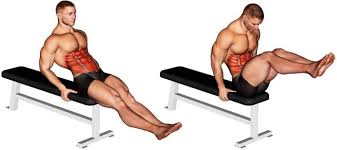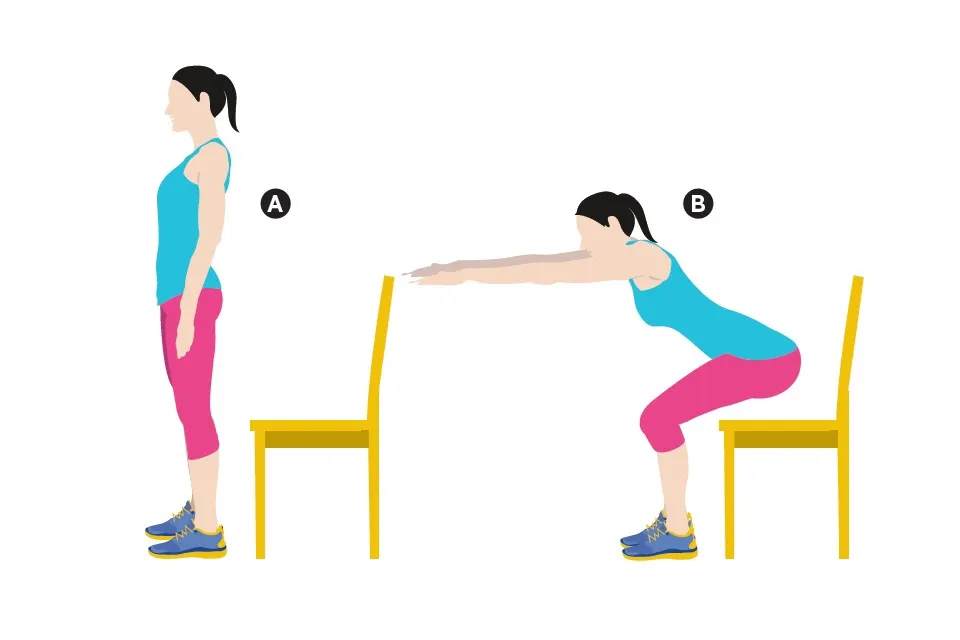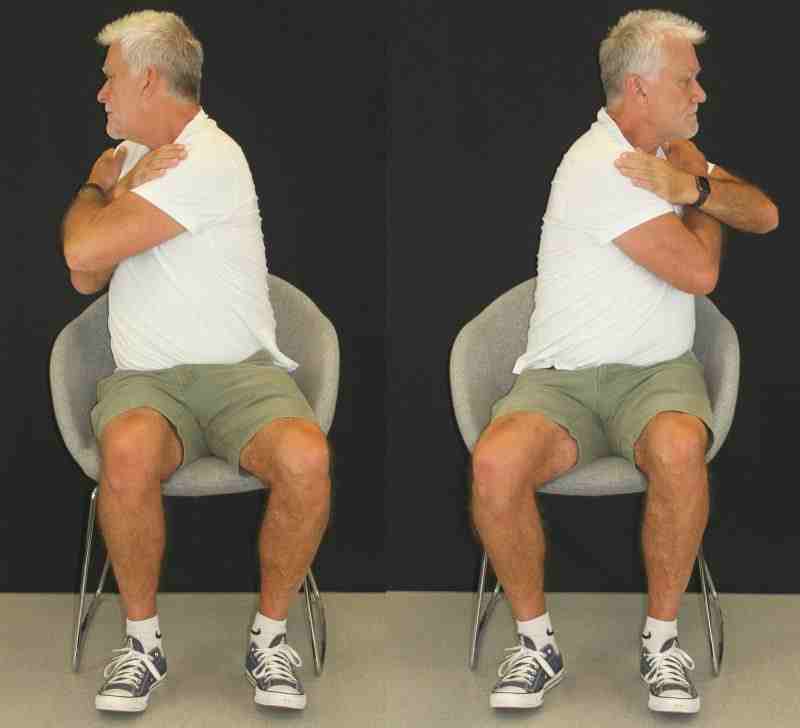Imagine it’s 8:30 AM, and you’re already seated at your desk with a cup of coffee, ready to dive into another eight-hour day filled with meetings, emails, and deadlines. By the time the clock strikes 5:00 PM, you’ve hardly moved from your chair, and your body feels as stiff as the office chair you’ve been glued to. Sound familiar? You’re not alone.
For many, the traditional 9 to 5 desk job can be a barrier to maintaining fitness and overall well-being. But what if there were simple, effective strategies to stay fit without sacrificing your work productivity? In this article, we’ll explore practical tips and routines that can seamlessly integrate into your workday, helping you transform your desk-bound hours into a foundation for a healthier lifestyle.
Importance of Exercise
In the modern era, where technology has revolutionized the way we work, the prevalence of sedentary lifestyles has become a growing concern. Many of us find ourselves spending the majority of our day seated at desks, whether in the office or working remotely. While the convenience of technology has undoubtedly improved our efficiency and productivity, it has also inadvertently led to a decline in physical activity levels.
Regular exercise is not just a luxury; it’s a necessity for maintaining optimal health and well-being. Physical activity plays a crucial role in keeping our bodies functioning at their best, from improving cardiovascular health and strengthening muscles to boosting mood and enhancing cognitive function. Yet, despite being aware of these benefits, many individuals struggle to prioritize exercise in their daily lives, particularly those with demanding desk jobs.
The sedentary nature of desk jobs poses significant health risks that cannot be overlooked. Prolonged sitting has been linked to a myriad of adverse health effects, including an increased risk of obesity, heart disease, type 2 diabetes, and even certain types of cancer. When we spend long hours seated, our bodies become accustomed to inactivity, leading to muscle stiffness, weakened bones, and a slowed metabolism.
Moreover, the toll of sedentary behavior extends beyond physical health; it can also impact our mental and emotional well-being. Studies have shown that prolonged sitting is associated with higher levels of stress, anxiety, and depression, as well as decreased cognitive function and overall quality of life.
In essence, the sedentary lifestyle that often accompanies desk jobs presents a double-edged sword: while it offers convenience and comfort in the short term, it poses significant long-term risks to our health and vitality. Recognizing the importance of regular exercise and taking proactive steps to incorporate physical activity into our daily routines is essential for mitigating these risks and promoting overall well-being.
Improving Sitting Posture

Good posture is crucial for overall well-being as it not only affects physical health but also impacts mental and emotional well-being. Here’s a breakdown of its importance and tips on maintaining proper posture:
Importance of Good Posture:
- Musculoskeletal Health: Proper posture helps distribute the force of gravity more evenly through the body, reducing strain on muscles, joints, and ligaments. This can prevent conditions such as back pain, neck pain, and joint stiffness.
- Spinal Alignment: Maintaining good posture ensures that the spine is properly aligned, reducing the risk of developing spinal abnormalities like kyphosis (rounding of the upper back) or lordosis (excessive inward curvature of the lower back).
- Breathing and Digestion: Good posture allows for optimal lung expansion and diaphragmatic breathing, which promotes efficient oxygen intake and can enhance digestion by preventing compression of abdominal organs.
- Confidence and Mood: Posture influences how others perceive us and how we perceive ourselves. Standing or sitting tall with good posture can convey confidence and assertiveness, while slouching may convey insecurity or low self-esteem. Additionally, research suggests that adopting an upright posture can positively affect mood and self-esteem.
Tips for Maintaining Proper Posture:
- Sit and Stand Tall: Whether sitting or standing, imagine a string pulling you upward from the top of your head. Keep your shoulders back and relaxed, and align your ears, shoulders, and hips in a straight line.
- Support Your Lower Back: When sitting, use a chair with good lumbar support or place a small cushion or rolled-up towel behind your lower back to maintain its natural curve.
- Adjust Your Workstation: Ensure that your desk, chair, and computer monitor are ergonomically arranged to promote good posture. Your feet should be flat on the floor, with knees bent at a 90-degree angle, and your monitor should be at eye level to prevent straining your neck.
- Take Regular Breaks: Avoid prolonged periods of sitting or standing in one position. Set reminders to take short breaks every 30–60 minutes to stretch, walk around, or change positions.
- Engage Core Muscles: Strengthening the muscles of the core (abdominals, obliques, and lower back) can help support good posture. Practice exercises such as planks, bridges, and abdominal crunches to build core strength.
- Be Mindful of Posture Throughout the Day: Pay attention to your posture during daily activities such as walking, lifting, and carrying objects. Avoid slouching or hunching over, and consciously maintain proper alignment.
- Use Posture-Correcting Devices: Consider using ergonomic chairs, posture braces, or wearable devices that provide feedback on your posture to help reinforce good habits.
- Stretch and Mobilize: Incorporate stretching and mobility exercises into your routine to release tension and improve flexibility in muscles that may become tight due to poor posture, such as the chest, shoulders, and hip flexors.
By prioritizing good posture and incorporating these tips into your daily routine, you can reduce the risk of musculoskeletal problems, improve physical comfort and confidence, and support overall well-being.
Being Active During Commutes
Incorporating physical activity into your daily commute is a great way to stay active, even with a busy schedule. Here are some tips for being active during commutes:
- Walking or Biking: If possible, consider walking or biking to work instead of driving or taking public transportation. Not only does this add physical activity to your day, but it also reduces carbon emissions and contributes to environmental sustainability.
- Public Transportation: If walking or biking isn’t feasible for the entire commute, consider incorporating it partially. Get off public transportation a few stops earlier and walk the remaining distance to your workplace. Alternatively, you can bring a foldable bike with you on public transport for a more flexible commute.
- Stairs Over Elevators: Opt for taking the stairs instead of the elevator whenever possible. Climbing stairs is an excellent way to get your heart rate up and engage your leg muscles.
- Park Farther Away: If you drive to work, park your car farther away from the entrance to add some extra walking distance to your commute.
- Active Commuting Groups: Consider joining or forming a group of colleagues who are interested in active commuting. You can walk or bike together, providing motivation and accountability for each other.
- Use Walking Meetings: Instead of sitting in a conference room, suggest having walking meetings with coworkers. Not only does this add physical activity to your day, but it can also stimulate creativity and productivity.
- Audio Workouts or Podcasts: If you use public transportation, listen to audio workouts or educational podcasts during your commute. This turns passive commuting time into an opportunity for personal development and fitness.
- Stretching: Use moments of waiting, such as at a bus stop or train station, to do some quick stretches. Stretching helps improve flexibility and reduce muscle tension accumulated from sitting or standing for long periods.
- Mindful Commuting: Use your commute as a time for mindfulness or meditation. Practice deep breathing exercises or mindfulness techniques to reduce stress and start your day with a clear mind.
- Set Goals and Track Progress: Set goals for your active commuting efforts, such as walking a certain number of steps or biking a certain distance each week. Use fitness trackers or apps to track your progress and stay motivated.
By incorporating these tips into your daily commute, you can turn what might otherwise be a sedentary time into an opportunity to stay active and improve your overall health and well-being.
Desk Exercises
Here are some simple exercises that can be done right at your desk to combat the effects of sitting for long periods:
Seated Leg Raises: Sit up straight in your chair with your feet flat on the floor. Keeping your back straight and core engaged, lift one leg straight out in front of you, hold for a few seconds, then lower it back down. Repeat on the other leg. Aim for 10-15 repetitions on each leg.

Chair Squats: Stand in front of your chair with your feet shoulder-width apart. Lower yourself down into a squat, keeping your weight in your heels and your chest lifted. Tap your glutes lightly on the edge of the chair, then stand back up. Repeat for 10-15 reps.

Desk Push-Ups: Stand facing your desk, about arm’s length away. Place your hands shoulder-width apart on the edge of the desk and walk your feet back until your body is in a straight line from head to heels. Lower your chest towards the desk, then push back up to the starting position. Aim for 10-15 reps.

Shoulder Blade Squeeze: Sit up straight in your chair with your feet flat on the floor. Roll your shoulders back and down, then squeeze your shoulder blades together as if you’re trying to hold a pencil between them. Hold for a few seconds, then release. Repeat for 10-15 reps.

Desk Dips: Sit on the edge of your chair and place your hands on the edge of your desk, fingers facing forward. Walk your feet forward until your hips are off the chair and your knees are at a 90-degree angle. Lower yourself down by bending your elbows, then push back up to the starting position. Aim for 10-15 reps.

Neck Stretches: Sit up straight in your chair and gently tilt your head to one side, bringing your ear towards your shoulder until you feel a stretch in the side of your neck. Hold for a few seconds, then switch sides. Repeat 2-3 times on each side.

Seated Torso Twists: Sit up straight in your chair with your feet flat on the floor. Hold the armrests or the back of your chair for support. Twist your torso to one side, reaching your opposite hand towards the back of the chair. Hold for a few seconds, then return to the center and repeat on the other side. Aim for 10-15 reps on each side.

These exercises can help to improve circulation, alleviate muscle tension, and counteract the negative effects of prolonged sitting. Remember to take breaks throughout the day to stretch and move your body whenever possible!
Take Advantage of Lunch Breaks
Taking advantage of lunch breaks is a fantastic opportunity to incorporate physical activity into your workday. Here are some suggestions to make the most of this time:
- Go for a Walk: Use your lunch break to take a brisk walk outdoors. This can help you get some fresh air, clear your mind, and boost your energy levels for the rest of the day. Aim to walk for at least 20-30 minutes to reap the benefits of cardiovascular exercise.
- Find Nearby Fitness Facilities: If your workplace is close to a gym or fitness center, consider joining or dropping in for a workout during your lunch break. Many gyms offer short classes or express workouts specifically designed for busy professionals.
- Bring Your Workout Gear: Pack your workout clothes and shoes the night before, so you’re ready to exercise during your lunch break. Having everything prepared in advance removes barriers and makes it easier to stick to your fitness routine.
- Try Quick Workouts: If you’re short on time, opt for quick, high-intensity workouts that you can do in 20-30 minutes. This could include circuit training, HIIT (high-intensity interval training), or bodyweight exercises like squats, lunges, push-ups, and planks.
- Utilize Office Space: If leaving the office isn’t feasible, make use of available space indoors. You can do yoga stretches, bodyweight exercises, or even use resistance bands or small weights for a strength-training session right in your office or a nearby conference room.
- Join a Lunchtime Class: Many workplaces offer lunchtime fitness classes or activities onsite. Check if your company provides yoga sessions, group fitness classes, or other physical activities during lunch breaks. Participating in these activities can help you stay motivated and accountable.
- Meal Prep for Efficiency: To maximize your time for exercise, consider meal prepping or buying a healthy lunch that you can quickly eat after your workout. This ensures you have enough time to both exercise and refuel before returning to work.
- Stay Hydrated: Remember to drink water before, during, and after your lunchtime workout to stay hydrated. Proper hydration is essential for optimal performance and recovery.
By making the most of your lunch breaks, you can incorporate regular physical activity into your workday, boost your fitness levels, and improve your overall health and well-being.
Stay Hydrated and Eat Well
Staying hydrated and making healthy food choices are crucial components of supporting fitness goals, especially in a 9 to 5 desk job where sedentary behavior and stress can be common. Here’s why they’re important and some tips for incorporating them into your daily routine:
1. Hydration: Proper hydration is essential for overall health and well-being, as well as for optimal physical performance. When you’re dehydrated, your energy levels and cognitive function can suffer, making it harder to stay focused and productive at work, let alone maintain a consistent exercise routine. Additionally, staying hydrated supports digestion, nutrient absorption, and helps regulate body temperature, all of which are important for maintaining a healthy metabolism.
Tips for staying hydrated:
- Keep a refillable water bottle at your desk and aim to drink water regularly throughout the day.
- Set reminders on your phone or computer to take water breaks.
- Flavor your water with slices of fruit or herbs to make it more appealing if you struggle to drink plain water.
2. Nutritious Food Choices: Fueling your body with nutritious foods provides the energy and nutrients needed for optimal performance, both mentally and physically. Eating a balanced diet rich in whole foods like fruits, vegetables, lean proteins, whole grains, and healthy fats can help regulate blood sugar levels, support muscle growth and repair, and provide sustained energy throughout the day. On the other hand, relying on processed or high-sugar snacks can lead to energy crashes and cravings, making it harder to resist unhealthy office treats.
Tips for packing nutritious lunches and snacks:
- Plan and prep your meals and snacks ahead of time to ensure you have healthy options readily available.
- Pack a variety of colorful fruits and vegetables, such as carrot sticks, cucumber slices, berries, and apples, for convenient and nutritious snacks.
- Include lean proteins like grilled chicken, hard-boiled eggs, or tofu, and complex carbohydrates like quinoa, brown rice, or whole grain bread to keep you feeling satisfied and energized.
- Opt for healthy fats from sources like avocado, nuts, seeds, and olive oil to support brain health and keep hunger at bay.
- Choose portable snacks that are easy to grab and enjoy on the go, such as yogurt, hummus with whole grain crackers or veggie sticks, trail mix, or homemade energy bars.
By staying hydrated and making mindful food choices, you’ll not only support your fitness goals but also enhance your overall health and well-being, allowing you to perform at your best both at work and during your workouts.
Get Support from Coworkers
Getting support from coworkers can be a game-changer when it comes to staying fit in a 9 to 5 desk job. Here’s how to encourage a supportive environment at work:
- Form Fitness Groups: Encourage coworkers to join you in forming fitness groups. Whether it’s a walking club during lunch breaks, a weekly yoga session after work, or a morning running group, having others to exercise with can make it more enjoyable and motivating.
- Organize Office Challenges: Plan fun fitness challenges that everyone can participate in. This could be a step challenge where participants compete to see who can take the most steps in a week, a healthy eating challenge, or a workout challenge where teams compete to complete the most workouts.
- Share Healthy Tips and Recipes: Start a conversation about health and wellness in the office by sharing healthy tips, recipes, and meal prep ideas. You can create a communal space, like a bulletin board or Slack channel, where coworkers can exchange ideas and support each other’s healthy habits.
- Celebrate Milestones Together: Celebrate fitness milestones and achievements as a team. Whether it’s someone completing their first 5K race, reaching a weight loss goal, or consistently hitting their fitness targets, acknowledging these accomplishments can boost morale and motivate others to stay on track.
- Offer Encouragement and Accountability: Be a source of encouragement and accountability for your coworkers, and encourage them to do the same for you. Check in with each other regularly to see how everyone is progressing toward their fitness goals, and offer support and motivation when needed.
- Plan Active Team Building Activities: Instead of traditional team building activities that revolve around food or sedentary games, suggest activities that involve physical movement. This could be anything from a group hike or bike ride to a friendly game of soccer or volleyball.
- Lead by Example: Be a positive role model for your coworkers by consistently prioritizing your own fitness and wellness. When they see your commitment and enthusiasm for staying active, it can inspire them to do the same.
- Create a Supportive Environment: Foster a workplace culture where health and wellness are valued and supported. Encourage management to provide resources and initiatives that promote employee well-being, such as gym memberships, onsite fitness classes, or flexible work hours that allow for exercise.
By fostering a supportive environment where coworkers can encourage and motivate each other, you can make staying fit in a 9 to 5 desk job feel like a team effort rather than a solo endeavor.
Stress Management
Stress management plays a crucial role in maintaining overall health and fitness because chronic stress can negatively impact both physical and mental well-being. When stress levels are high, it can lead to issues such as poor sleep, increased risk of illness, elevated blood pressure, and difficulty maintaining a healthy weight. Additionally, stress can hinder motivation and energy levels, making it harder to stay consistent with exercise and healthy habits.
To effectively manage stress and support health and fitness goals, individuals can incorporate various stress-relieving activities into their daily routines. These activities help to promote relaxation, reduce tension, and improve mood. Some suggestions for stress-relieving activities include:
- Meditation and Mindfulness: Taking a few minutes each day to practice meditation or mindfulness can help calm the mind, reduce anxiety, and increase awareness of the present moment.
- Deep Breathing Exercises: Engaging in deep breathing exercises can trigger the body’s relaxation response, lowering heart rate and promoting a sense of calm.
- Physical Activity: Exercise is not only beneficial for physical health but also an effective way to reduce stress. Activities like walking, running, yoga, or dancing can help release endorphins, which are natural mood lifters.
- Spending Time in Nature: Spending time outdoors in nature can have a calming effect on the mind and body. Activities such as hiking, gardening, or simply taking a walk in the park can help reduce stress levels.
- Journaling: Writing down thoughts and feelings in a journal can provide an outlet for expressing emotions and gaining perspective on stressful situations.
- Socializing: Spending time with friends and loved ones can provide emotional support and laughter, which can help alleviate stress.
- Listening to Music: Listening to calming music or engaging in activities like playing an instrument can help relax the mind and reduce stress levels.
What Happens If You Do HIIT Everyday?
Incorporating these stress-relieving activities into daily life can help individuals better manage stress, improve overall well-being, and support their health and fitness goals.
FAQs
Q 1. How can I stay motivated to be active despite a busy work schedule?
Ans. Find activities you enjoy, set achievable goals, and reward yourself for meeting them. Remember, consistency is key.
Q 2. What are some quick and healthy snack options for the office?
Ans. Opt for snacks like nuts, seeds, fresh fruit, or yogurt to keep hunger at bay and energy levels up.
Q 3. How often should I change my sitting or standing position with a standing desk?
Ans. It’s recommended to alternate between sitting and standing every 30 minutes to an hour to minimize discomfort and maximize the benefits.
Q 4. Can stretching really make a difference in my fitness if I have a desk job?
Ans. Yes, regular stretching can improve flexibility, reduce muscle tension, and increase blood flow, contributing to overall fitness.
Q 5. How do I deal with muscle stiffness from sitting all day?
Ans. Take frequent breaks to move and stretch, use ergonomic furniture, and consider massage or physical therapy for persistent issues.
Q 6. What should I look for in an ergonomic office chair?
Ans. Look for chairs with lumbar support, adjustable height and armrests, and a comfortable seat that promotes good posture.
Q 7. How can I ensure I’m drinking enough water throughout the day?
Ans. Keep a water bottle at your desk and set reminders to take sips regularly, especially before and after breaks.
Conclusion
In conclusion, staying fit while working a 9 to 5 desk job is not only possible, but it’s also essential for our overall well-being. By incorporating these simple yet effective strategies into your daily routine, you can combat the sedentary nature of desk jobs and promote a healthier lifestyle. Remember, every little bit counts. Whether it’s maintaining good posture, taking regular breaks, doing desk exercises, eating healthily, or keeping your mind stress-free, each step contributes to your fitness journey. So, don’t let your desk job deter you from leading a healthy life.

Good day, and welcome to Fitthour. My name is Shubham Vijay, and I am a certified personal trainer and nutrition coach with 6 years of experience in the fitness industry. At Fitthour, we specialize in types of training, such as strength training, cardio, or HIIT, and our mission is to help clients achieve their fitness goals and improve their overall health.




